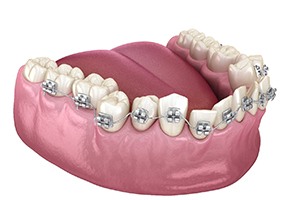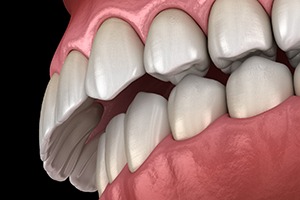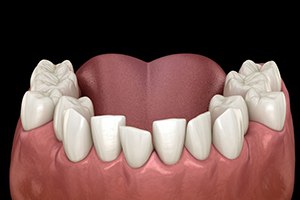
Traditional Braces – Westborough, MA
The Time-Tested Way to Straighten Teeth

Traditional braces have helped generations of patients to achieve healthier smiles; they are truly a time-tested way to straighten teeth! If you are dealing with a degree of dental misalignment, this treatment might be a fit for you! Our Westborough dental team will be happy to use our knowledge and skills to help you reach your goals. Continue reading below to learn more about traditional braces, and then get in touch with us when you are ready to request an orthodontic consultation.
Why Choose All Dental for Traditional Braces?
- Effective Way to Straighten Teeth
- Affordable Orthodontic Treatment
- Empathetic & Skilled Dental Team
How Do Traditional Braces Work?

Traditional braces use brackets that get bonded to the teeth. An arch wire connects the brackets. Together, these components place gentle pressure on the teeth in order to gradually reposition them. As the arch wire gets replaced at periodic appointments (usually every 6 – 8 weeks), the teeth continue to progress. The average braces treatment lasts18 – 36 months, though some cases require more or less time.
What Orthodontic Issues Can Braces Fix?

Braces are suitable for most orthodontic problems, from minor aesthetic misalignment to severe issues that can threaten your oral health and overall wellness. They are a versatile treatment and can be used in even complex and severe cases! Below, you will find a few examples of issues that braces are commonly used to address.
Bite Misalignment

Problems like overbite, underbite, crossbite, and open bite can adversely affect your facial aesthetics. They can also interfere with your chewing ability, put you at a greater risk of oral health problems, and contribute to the development of TMJ disorder. Braces, often with the help of special accessories, can usually address bite alignment problems.
Crowded & Crooked Teeth

Crowded, crooked, and overlapping teeth can easily trap food between them, leading to an increased risk of bad breath, tooth decay, and gum disease. The teeth may also be more prone to breakage. Braces, sometimes after strategic extractions, can shift the teeth in a way that allows them to function optimally.
Gapped Teeth

Large gaps between the teeth can leave your gums vulnerable to harm. You may also feel self-conscious about the appearance of your smile and be reluctant to let others see it. Fortunately, braces are often able to move the teeth closer together so they can look, feel, and function better.
Caring for Your Braces

To make your treatment a success, you should follow some basic steps to take good care of your braces:
- Keep up with a good oral hygiene routine. Twice-daily brushing and once-daily flossing are both important.
- Watch your diet. You should avoid foods that could damage your braces, such as hard and sticky foods.
- Attend all recommended dental appointments. In addition to periodically getting your braces adjusted, you should also attend routine teeth cleanings.